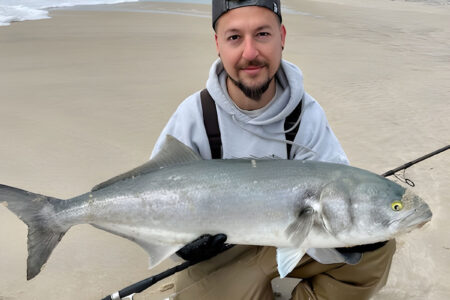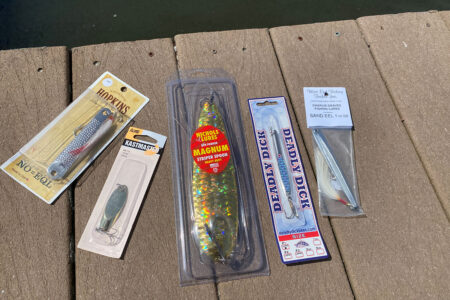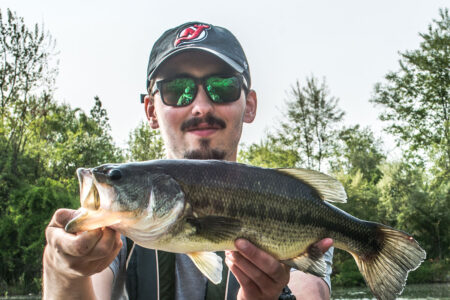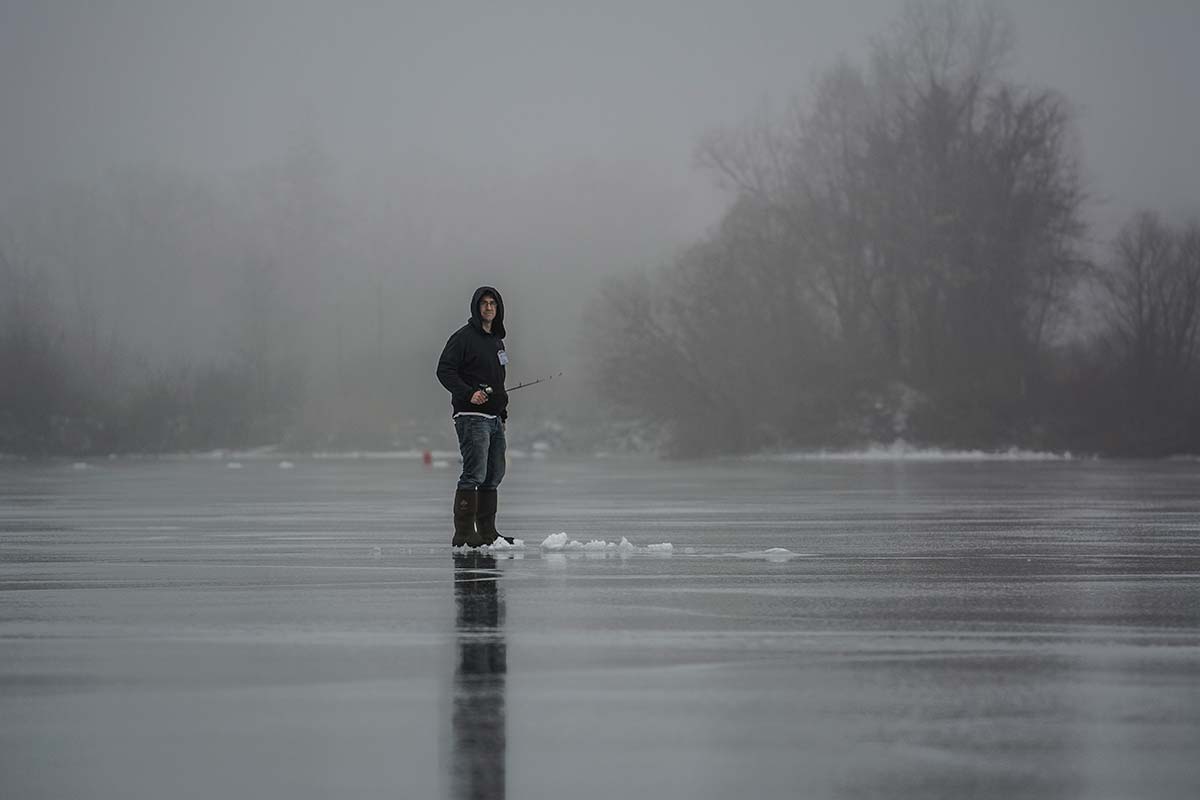
It’s a tight window in the Garden State – best to be prepared.
An ice-covered lake can be a daunting proposition. If you have no idea what’s underneath, the ice fishing it offers will be blind. Even sonar won’t help much. You could spend all day with a graph unit while trying to map a picture in your mind and fail.
I have faced unknown water when ice fishing and won’t again. Even when I fished with others who did know the water, to go on second-hand knowledge felt disconcerting. On a different occasion, I drove up to Lake Hopatcong from Mercer County when I was 17. My two brothers and I had no idea of what the water was like underneath 15 inches of ice. I whacked out holes with a splitting bar as if doing something productive would get rid of my doubt, but I could not escape a feeling of unreality. Otherwise, I got an invitation to fish Swartswood Lake in 2005 for the first time. The ice felt forbidding, but I trusted the others’ knowledge. I would have felt better if I knew the water myself, though.
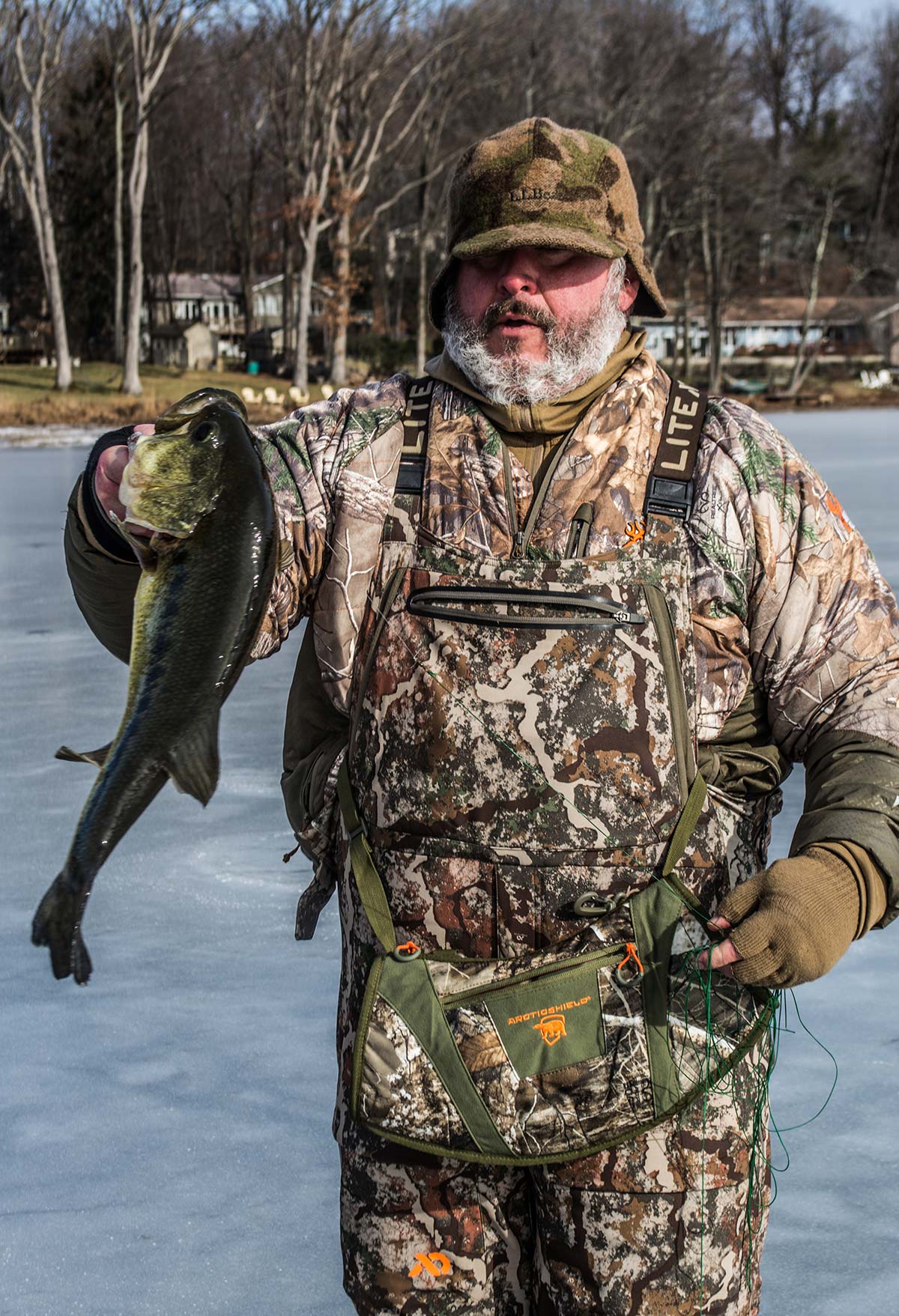
Be Prepared
First, if you’re new to ice fishing, you’ll need to get over an even more general sense of bewilderment. If you don’t know anyone who ice fishes, either be socially forward and get to know someone who does, or hire a guide. Anyone who will show you how to do it will tell you the foremost thing to keep in mind is safety. Especially lakes and reservoirs freeze unevenly, which means a cove might have 4 inches of hard, clear ice and be safe to fish, while the water covering a main lake point remains open or is covered by thin ice. It has to do with wind. A 2-acre pond will, most likely, take a uniform amount of wind on its surface and freeze evenly. It will also freeze to a safe thickness before lakes and reservoirs in the same region do.
Always drape a pair of ice spikes over your shoulders. If you do go through, grip a spike and jam into the ice to haul yourself out. Move away on all fours from where you went through. That posture spreads out your weight. As you gain experience on the ice, you learn about how to be comfortably safe on it, but the learning curve never ends and caution accompanies every outing.
One of the lakes that friends and I have been ice fishing the past 4 years involves a quarter-mile trek across ice to our favorite spots. I always walk ahead of the others, testing ice as I go with my splitting bar. A few quick whacks assure me of safe thickness, because – if the ice is clear – I’m looking at how cracks fan out underneath my cut. They make judging the thickness easier. Without needing to break all the way through, I judge that thickness by sight. Most of the time, I can tell just by looking, but clear ice can be difficult to distinguish from the water underneath, which is when I level a few whacks.
The second most important consideration is how you dress. You always should dress in layers, but try to dress only in wool. I put on a merino wool base layer, wool sweaters and Woolrich shirts over that. The last couple of years, I’ve been wearing a hunting bib, which is super warm. We’ve been fishing some seriously cold mornings down around zero and staying completely comfortable.
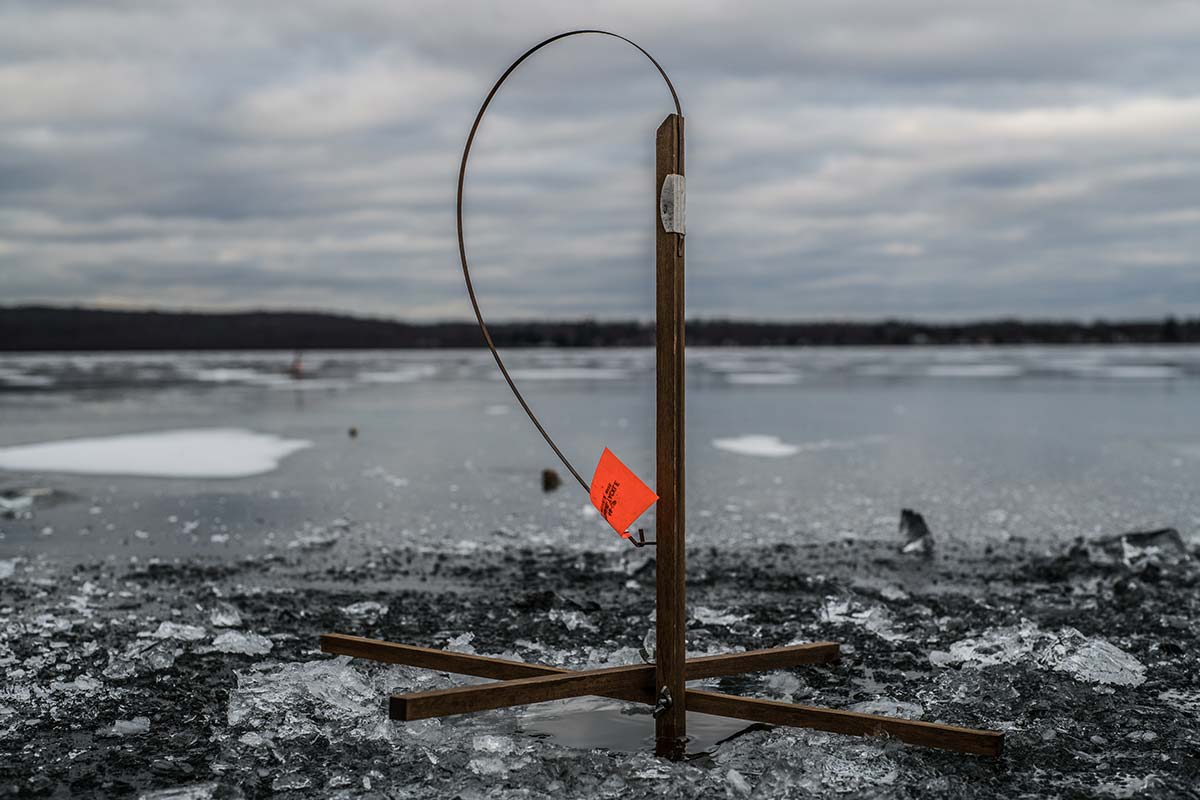
Gear & Tackle
Take the right gear and tackle with you onto the ice. A propane hand warmer is optional, an interesting novelty that works. Vermiculite foot and hand warmers can help, but Pac boots should stay warm without slipping one in for each foot.
My friend Brian Cronk owns a Jet Sled – the best device I’ve seen for carrying gear. I’ve also used a Flexible Flyer sled except in deep snow. A power auger is essential at my age unless the ice is only 4 or 5 inches thick. I’ve heard good things about lithium battery augers. If you do use one gas-powered, 40:1 or 50:1 premixed gas sold at hardware stores beats buying gas at the pump and mixing oil, because ethanol can gum up the carburetor.
The law limits us to five lines apiece. Most likely, at least four of those lines will spool on tip-ups. Tip-up styles are more diversified than when I began ice fishing in 1976. You can rig live shiners on plastic or wood models that support a submerged spool on a metal stanchion, on models that incorporate Styrofoam to insulate the hole, or on the traditional wood tip-ups. I still use some of the latter I owned in 1976. When holes freeze, we break the ice with the splitting bar or a metal ladle used for clearing holes of ice fragments and taking shiners from the bucket. None ever freeze all the way down to the spool, which remains submerged on the wood stanchion.
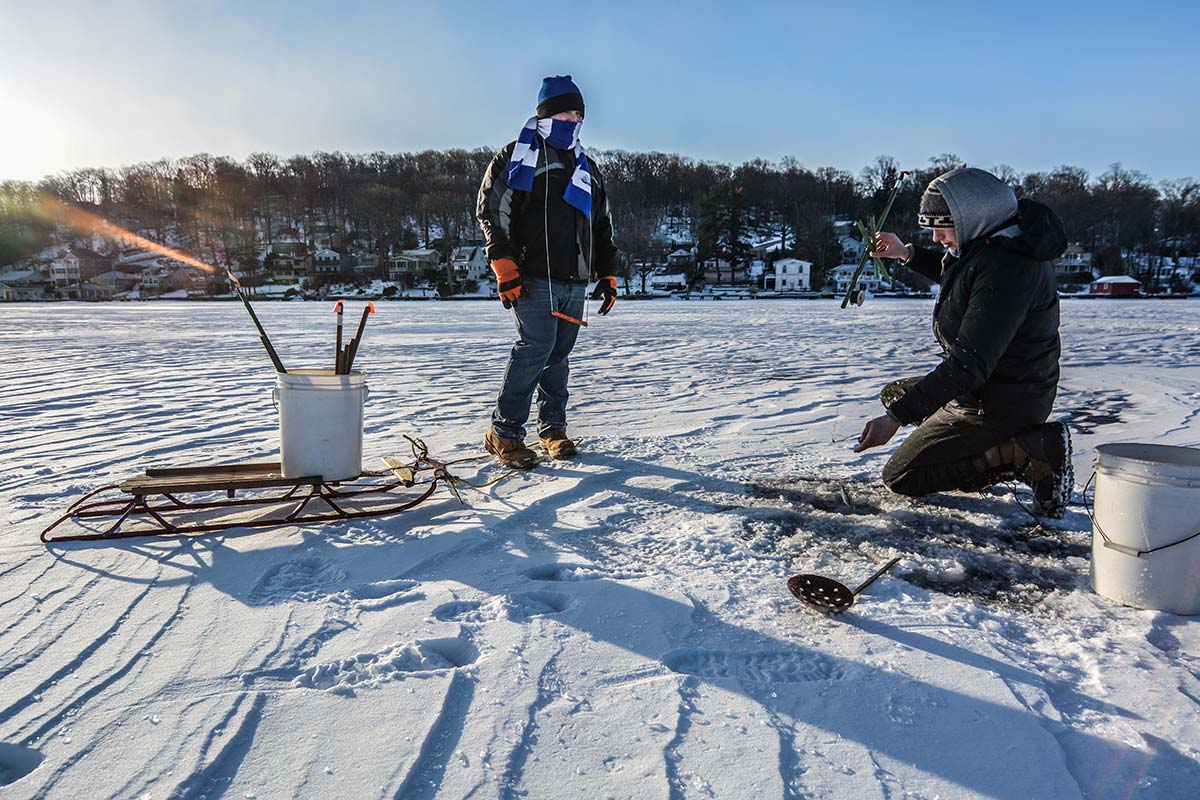
The rig is simple. For bass, connect 10-pound test fluorocarbon to a small barrel swivel connecting 40-pound test Dacron mainline. Tie on a size 6 plain shank hook to the leader and just clamp on a medium or large split shot with needlenose pliers that may also help in removing hooks. If pickerel, pike, or muskies are present, use wire leaders instead of fluorocarbon. A five-gallon bucket carries the shiners, which can be protected by an insulating Styrofoam liner that fits inside it. A battery-powered aerator ensures that the shiners stay alive.
Jigging catches any gamefish you might seek in New Jersey, panfish and pike alike, as well as muskies and walleye. I wouldn’t use a jigging rod suitable for panfish on muskies, but when you use heavier, you can man-handle heavier fish. There are hundreds of variations on the theme of panfish jigs – lead or tungsten, bismuth and brass. Rapala Ice Jigs work on larger gamefish, but so does the Binsky bladebait, Swedish Pimple, Kastmaster and various bucktails, plastic-tipped jigs, crappie jigs, and the like.
Before The Freeze
Knowing how to be safe and comfortable on the ice, and knowing what equipment and tackle is needed, are two prerequisites to having familiarized yourself with the lake or pond during open water season and therefore having some idea about just where to cut holes. Some guesswork, however, is often involved. I don’t like doing anything random or arbitrary, but guesswork makes sense to me, because it takes account of available information to form a hunch. Hunches interest me because I like the idea that perception might involve more than plain sensory reception.
Once I know a general area of the lake or pond I’m fishing is potentially productive, I break the situation down one step further; if I know, for example, that the pond’s corner had a summer weedline extending just so far into about 12 feet of water, I know with more exactness than generality about where to expect an edge of residual weeds – definitely a good spot for a hole. Furthermore, if I know there’s 30 feet of water about 25 yards out from the rocky rip-rap along shore that extends for 100 feet or more, I don’t know where to cut a hole as exactly as I did in the corner, but I can cut a few or more, each one where I feel best about it. When I set a tip-up in a hole and find the line does lower about 30 feet down, I know I’m in the right spot give or take 100 feet. Who knows if my feeling about setting one where I did set it judged anything real? No one does, but I would rather go on a casual feeling rather than on nothing.
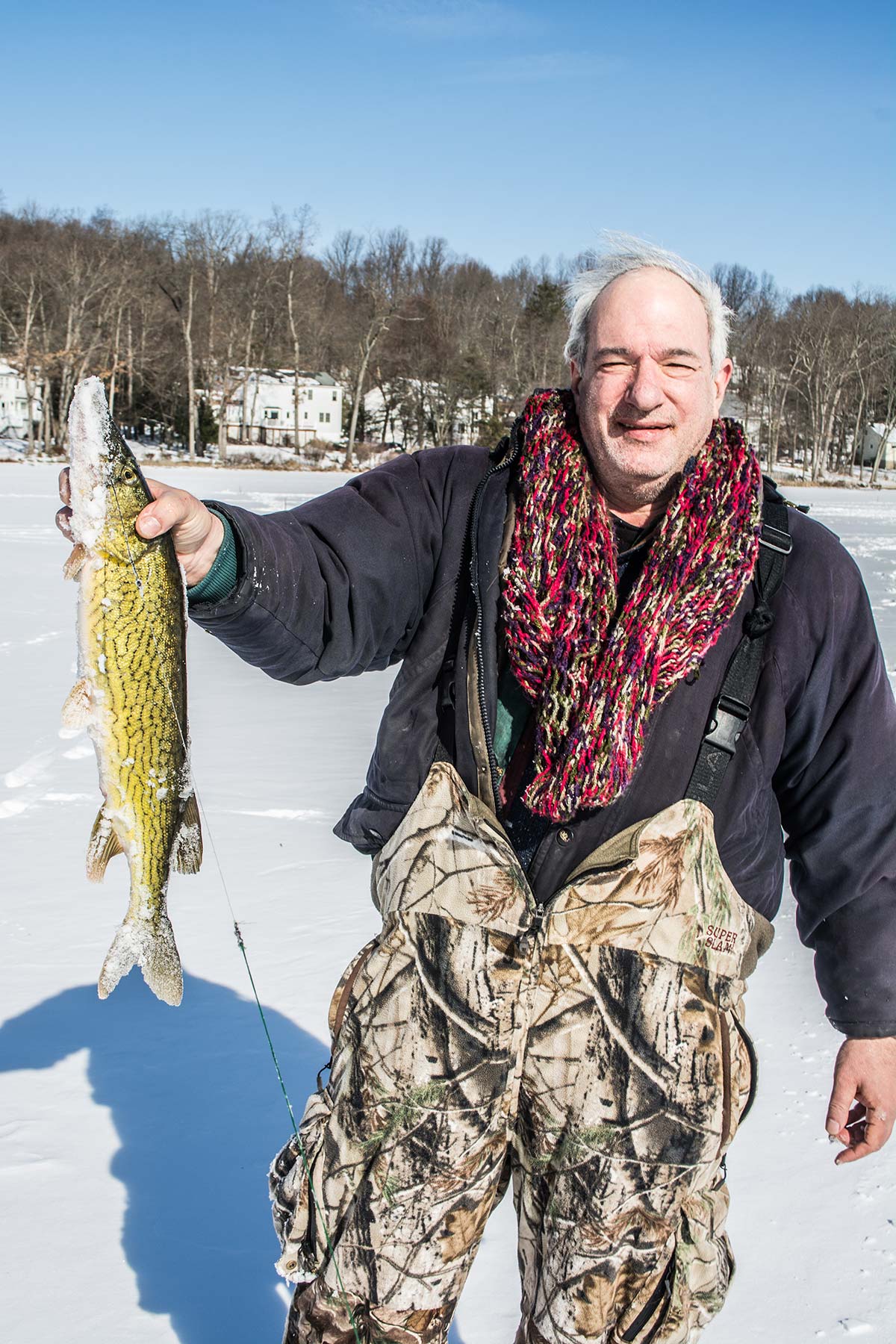
Why does 30 feet of water make any difference, anyhow? Because bass descend into the depths during winter, but not all of them. My friend Brian Cronk caught a 21-incher through the ice in 3 feet of water in a lake with water as deep as 9 feet. But the deepest water is slightly warmer, and while bass do feed throughout the winter, they like to hang loose without being very active. If they can sink down into 30 feet of water, instead of stalking forage among rocks 9 or 10 feet down, many of them might do that. At least one of them did this past winter, as I hooked it 30 feet down.
But all these spots – the corner, the rip-rap, the depths, residual weeds at 3 feet – might not be accessible to me and my friends as we ice fish, without us knowing the water underneath. Besides, often the same spots that yield fish during the warmwater season, yield fish from under the ice. We never fish the pond’s 30-foot depths when the water is open, but the corner and the rip-rap yield bass.
During the winter, the same spots are excellent for pickerel. We’ve also hooked a few summer pickerel in those 3 feet of water I mentioned, but admittedly, the flat serves much better – somehow – as an ice fishing spot. For years now we’ve consistently had many more tip-up flags go up there than in deeper water of 6 or 7 feet, though we continue to experiment.
